Identification of human control during walking
Jason K. Moore j.k.moore19@csuohio.edu
Sandra K. Hnat
Antonie J. van den Bogert
Human Motion and Control Laboratory [hmc.csuohio.edu]
Cleveland State University
March 4, 2014
Lower Extremity Exoskeletons
Idealized Gait Feedback Control
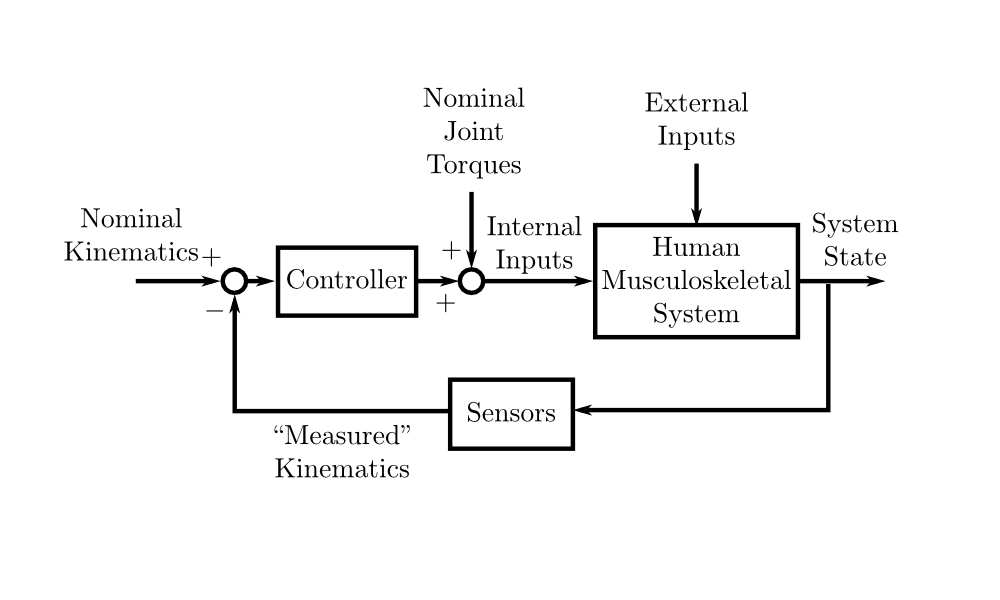
Idealized Gait Feedback Control
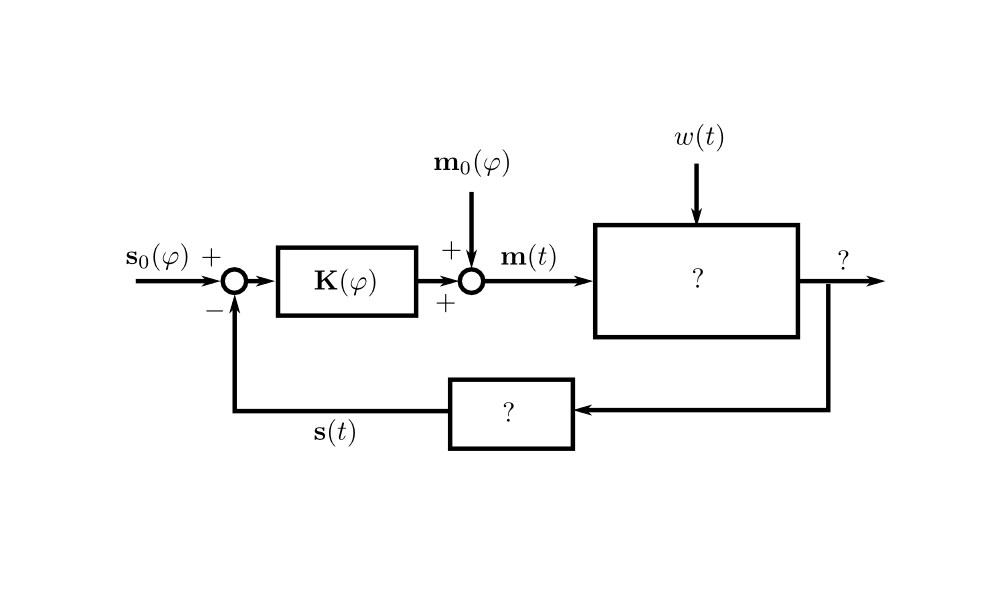
Estimated
|
Unknown
|
Controller Equations
\[ \mathbf{m}(t) = \mathbf{m}_0(\varphi) + \mathbf{K}(\varphi) [\mathbf{s}_0(\varphi) - \mathbf{s}(t)] \\ \] \[ \mathbf{m}(t) = \mathbf{m}_0(\varphi) + \mathbf{K}(\varphi) \mathbf{s}_0(\varphi) - \mathbf{K}(\varphi) \mathbf{s}(t) \\ \]
Linear Form
\[ \mathbf{m}(t) = \mathbf{m}^*(\varphi) - \mathbf{K}(\varphi) \mathbf{s}(t) \]
Map Human Control to Exoskeleton
Sensors
Assume that a lower limb exoskeleton can sense relative orientation and rate of the right and left planar ankle, knee, and hip angles.
\(\mathbf{s}(t) = \begin{bmatrix} s_1 & \dot{s}_1 & \ldots & s_q & \dot{s}_q \end{bmatrix} \) where \(q=6\)
Controls (plant inputs)
Assume that the exoskeleton can generate planar ankle, knee, and hip joint torques.
\(\mathbf{m}(t) = \begin{bmatrix}m_1 & \ldots & m_q \end{bmatrix} \) where \(q=6\)
Gain Matrix [Proportional-Derivative Control]
\( \mathbf{K}(\varphi) = \begin{bmatrix} k(\varphi)_{s_1} & k(\varphi)_{\dot{s_1}} & 0 & 0 & 0 & \ldots & 0\\ 0 & 0 & k(\varphi)_{s_2} & k(\varphi)_{\dot{s_2}} & 0 & \ldots & \vdots\\ 0 & 0 & 0 & 0 & \ddots & 0 & 0\\ 0 & 0 & 0 & \ldots & 0 & k(\varphi)_{s_q} & k(\varphi)_{\dot{s}_q} \\ \end{bmatrix} \)
Linear Least Squares
With \(n\) time samples in each gait cycle and \(m\) steps there are \(mnq\) equations and which can be used to solve for the \(nq(2q+1)\) unknowns: \(\mathbf{m}^*(\varphi)\) and \(\mathbf{K}(\varphi)\). This is a classic overdetermined system of linear equations that can be solved with linear least squares.
\[\mathbf{A}\mathbf{x}=\mathbf{b}\]
- \(\mathbf{A}\): joint angles and rates
- \(\mathbf{b}\): joint torques
- \(\mathbf{x}\): \(\mathbf{K}\) and \(\mathbf{m}^*\)
\[\mathbf{x}=(\mathbf{A}^T\mathbf{A})^{-1}\mathbf{A}^T\mathbf{b}\]
Experimental Protocol
- Full body motion capture: 47 markers
- Dual 6 DoF ground reaction forces
- 8 minutes (500+ steps) of longtidunal perturbations
- Three walking speeds: 0.8, 1.2, 1.6 m/s
- 10+ subjects
- Longitudinal perturbations
Random Belt Speed Variations
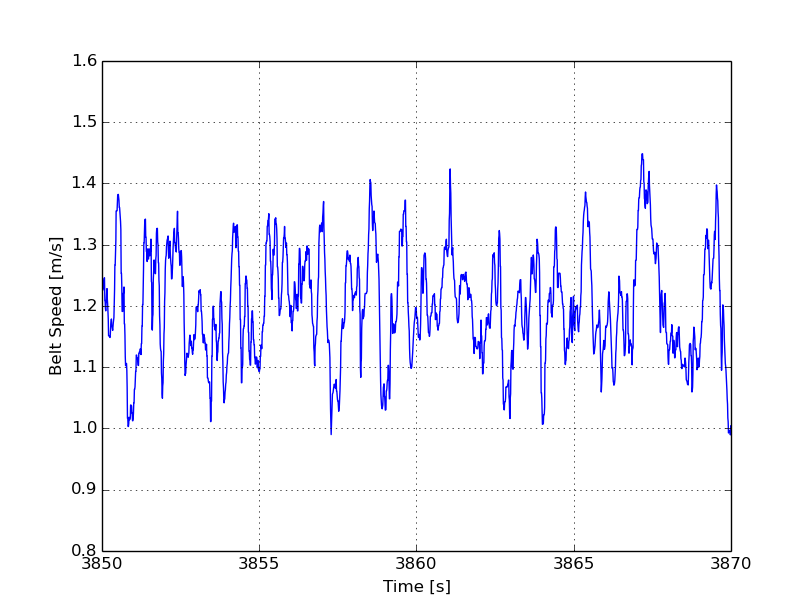
Random Belt Speed Variations
Measurement Variations

Measurement Variations

Gains: v=0.8 m/s
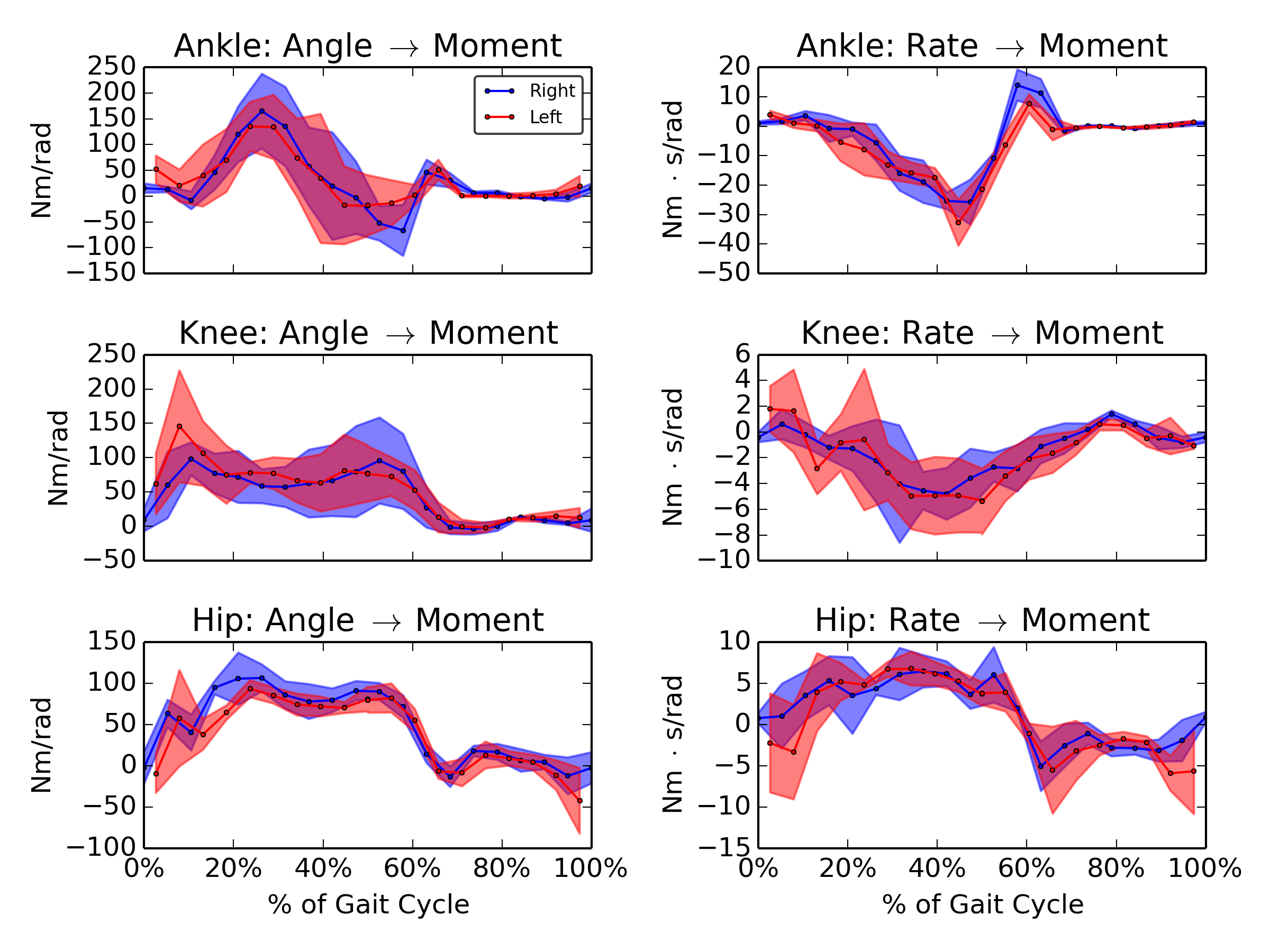
Gains: v=1.2 m/s
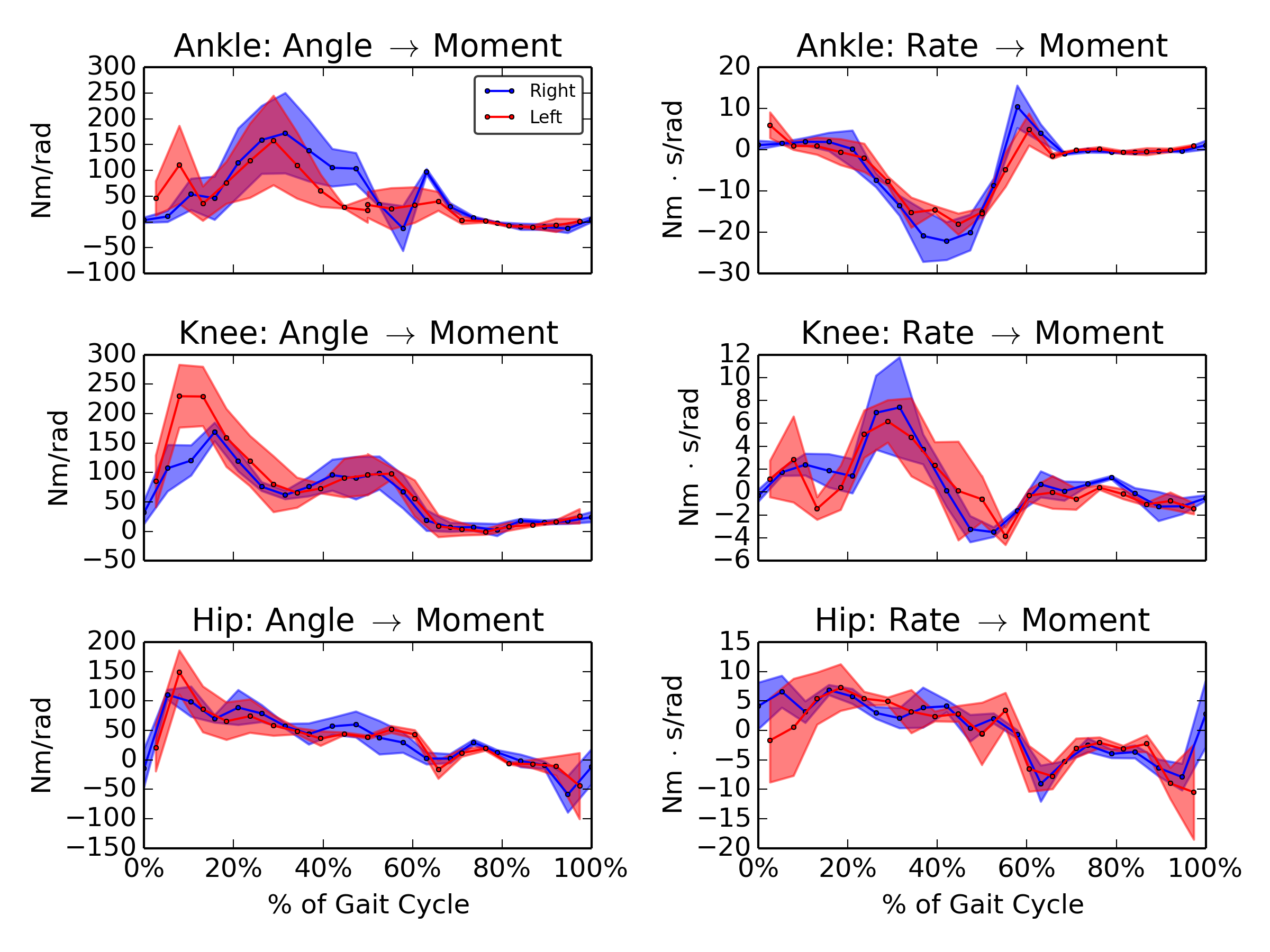
Gain variation with speed

How good is the model?
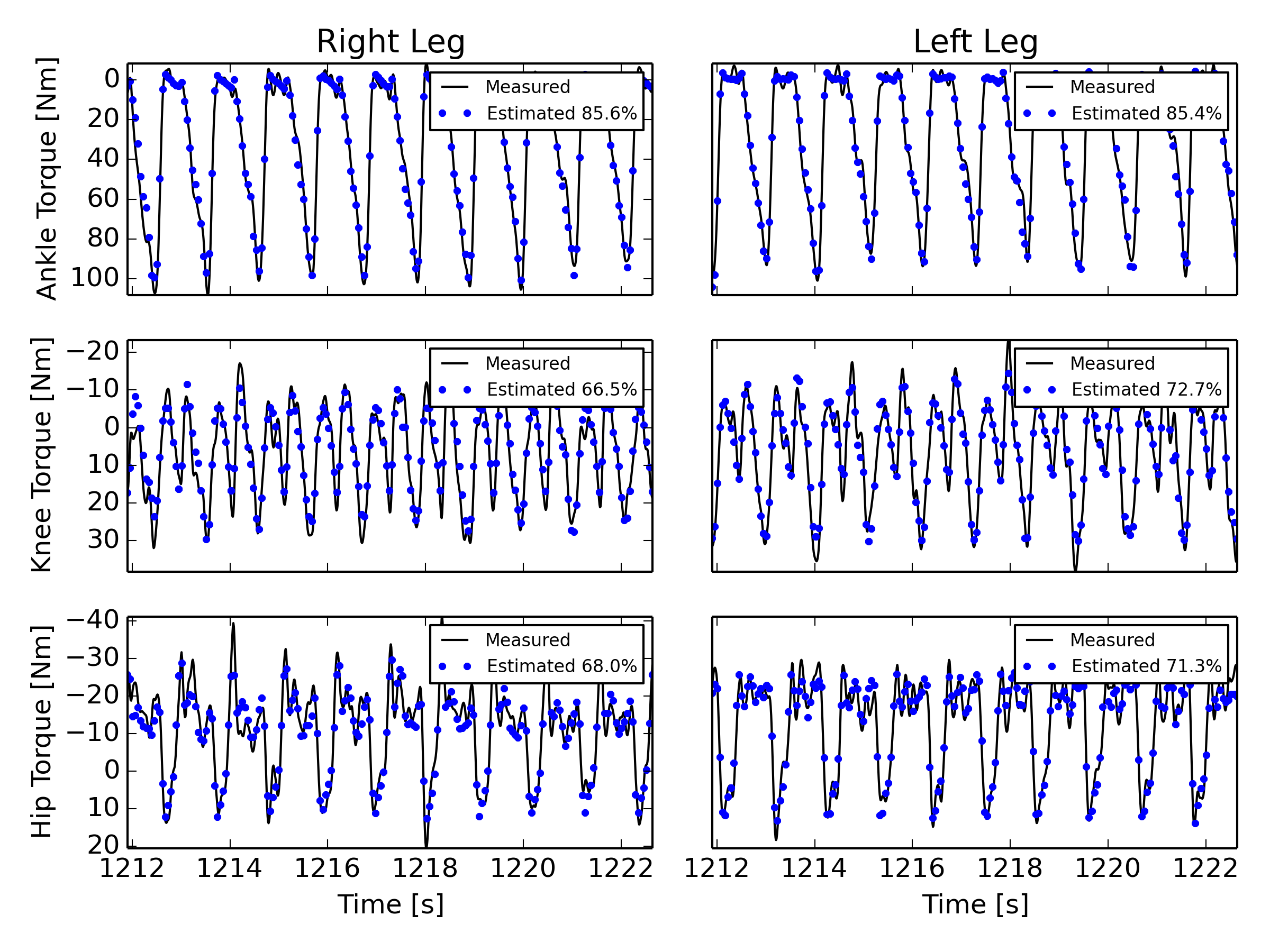
Summary
- Perturbations must be significantly higher that internal system noise to have any hope of estimating control in this fashion.
- Similar gain patterns in each leg.
- Similar gain patterns and magnitudes in different subjects.
- The model can predict the joint torques for independent data.
Future
- Explore full \(\mathbf{K}\) matrix.
- Add in time delays.
- Remove clock from controller.
- Non-linear control models: e.g. neural network.
- Use indirect system identification approach with plant model.
- Try out the controller on a simulation that has open loop control.
- Try out the controller on the Indego exoskeleton.
Tutorial
Simulation and Control of Biomechanical Systems with Python
Tonight at 6pm
Chemistry Computer Lab in the Whitby building on the 2nd floor. Next to ASEC (previous location).
https://github.com/pydy/pydy-tutorial-pycon-2014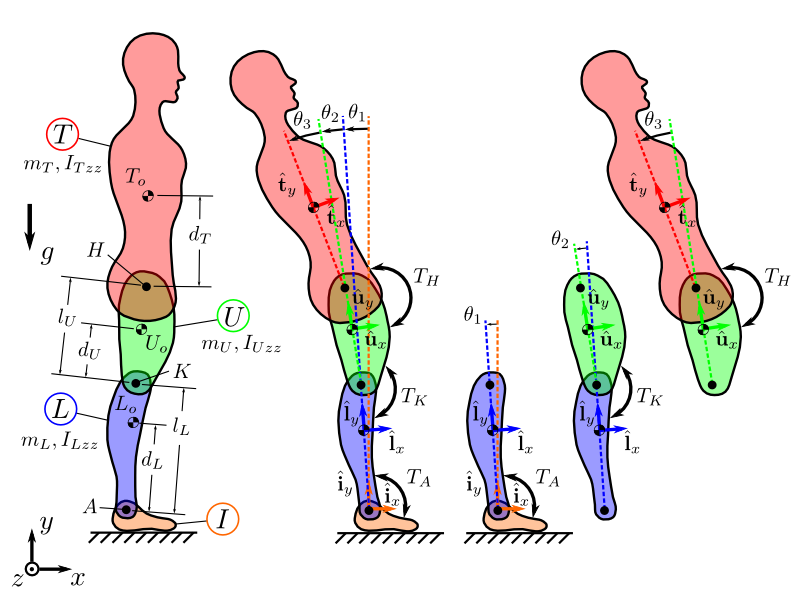
Information
Contact
- HMC Lab: hmc.csuohio.edu
- My website: moorepants.info
- Email: j.k.moore@csuohio.edu
Slides
Source code for this analysis
Data
- On its way!
/